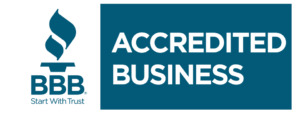Preparing to File for Bankruptcy in Wisconsin
You might think that making the decision to file for bankruptcy is the only real preparation necessary. However, whether it is Chapter 7 or Chapter 13 bankruptcy you plan to pursue, careful preparations need to be made in order for the bankruptcy code to work to your advantage. It is vital to work with bankruptcy experts (like those at Burr Law) who will guide you through the whole bankruptcy process, and that process starts well before the petition is filed in court.
Time of Filing
Chapter 7 bankruptcy is the best choice for actually getting rid of your unsecured debt. It requires a means test, though; you can’t make more than the median household income for your state. For Wisconsin, that amount is $64,168. The calculation of your household income is made from all of your income for the six months prior to the month in which you file for bankruptcy. So if there are particular times of the year when you receive money (for example, a bonus from your work or a payout from an investment) it would be wise to file for bankruptcy so that any extra income isn’t included. For instance, if you get a work bonus around the 20th of December every year, filing in December means that your household income is figured from June 1 through November 30. It is especially important to consider timing if your household income is close to the limit allowed for Chapter 7.
Credit Card Spending
When you are contemplating bankruptcy, it may be tempting to make a number of purchases on your credit cards. You may think that it is a good idea to use them while you still have them, and that it’s your final chance to buy something major. There is some truth to this thinking. No matter whether you declare bankruptcy using Chapter 7 or Chapter 13, you will no longer have access to your credit cards. However, it is important for you to know that some credit card debt can be determined nondischargeable. If you go on a spending spree just before filing bankruptcy, your credit card company can claim those were fraudulent purchases, that you never intended to repay them, and request that they be declared nondischargeable. You would need to be able to prove that you intended to repay them or that you didn’t plan to declare bankruptcy.
Presumed Fraudulence
There are some instances where the law presumes that your intent was fraudulent. If you use your credit cards in the three months before filing bankruptcy for luxury goods and services totaling more than $725, fraud is presumed (11 U.S.C. § 523(a)(2)(C)(i)(l). Likewise, If you use your credit cards for cash advances totaling more than $1,000 within 70 days before filing bankruptcy, fraud is presumed (11 U.S.C. § 523(a)(2)(C)(i)(l).
Necessary Spending
The designation of luxury goods is significant. The court will not penalize you for using your credit card for necessary expenses. So, while buying an in-home sauna would not be allowed, paying for your heating for the winter would. If you are considering taking a cash advance on your credit card in order to pay for necessary living expenses, it would be better to use your card to pay for the gas you need to get to work and the groceries to feed your family. Those expenses are easy to describe as necessary.
Bankruptcy Exemptions
Finally, Wisconsin is one of only 16 states that allows you to choose whether to use federal bankruptcy exemptions or Wisconsin state exemptions. This is an either/or choice though, you can’t choose a few Wisconsin exemptions, and mix them in with federal exemptions. The professionals at Burr Law will be able to give you the best advice for your particular situation.
When you decide to pursue bankruptcy, you need the help of experts right from the start. At Burr Law, we will be with you from the beginning—preparing to file, choosing which Chapter to use, deciding on the exemptions, and pursuing the bankruptcy through to completion.


